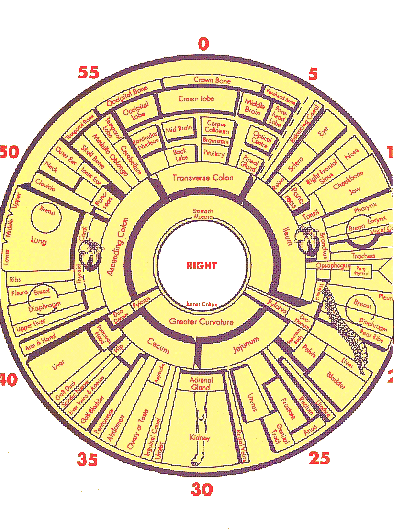December 23rd, 2011 by Steve Novella, M.D. in Quackery Exposed
No Comments »

 There are many medical pseudosciences that persist despite a utter lack of either plausibility or evidence for efficacy. Some practices emerged out of their culture of origin, or out of the prevailing ideas of a pre-scientific age, while others were manufactured out of the imagination of perhaps well-meaning but highly misguided individual practitioners. They were just made up – homeopathy, for example, or subluxation theory.
There are many medical pseudosciences that persist despite a utter lack of either plausibility or evidence for efficacy. Some practices emerged out of their culture of origin, or out of the prevailing ideas of a pre-scientific age, while others were manufactured out of the imagination of perhaps well-meaning but highly misguided individual practitioners. They were just made up – homeopathy, for example, or subluxation theory.
Iridology belongs to this latter category – a system of diagnosis that was invented entirely by Ignatz Peczely, a Hungarian physician who first published his ideas in 1893. The story goes that Peczely as a boy found an owl with a broken leg. At the time he noticed a prominent black stripe in the iris of one eye of the owl. He nursed the bird back to health and then noticed that the black line was gone, replaced by ragged white lines. From this single observation Peczely developed the notion of iridology.
Peczely’s idea was that the iris maps to the rest of the body in some way, and therefore the flecks of color in the iris reflect the state of health of the various body parts. This basic approach to diagnosis or treatment is called the homonculus approach – the idea that one part of the body maps to the rest of the body, including the organ systems. Reflexology, auricular acupuncture, and even straight chiropractic follow this approach.
This is what might have happened next: Read more »
*This blog post was originally published at Science-Based Medicine*
December 3rd, 2010 by Bryan Vartabedian, M.D. in Better Health Network, Opinion, True Stories
No Comments »

I just can’t imagine life today as a medical student. Every medical publication in the palm of your hand. The capacity to create an audience and publish at your own will. Real-time dialog between students, faculty, anyone. Global reach from your phone. It’s mind-boggling really.
This is in stark contrast to my experience. My world was centered on index cards, textbooks and pens with different colors. We communicated via Post-it notes on the door of the student lounge. There were no apps and our only game was foozball. As a first year I scheduled time to compose H&Ps on the library’s only Macintosh II computer. This was plugged into the new Apple LaserWriter with WYSIWYG. Hi tech we were. We thought.
Being distractible and restless, I’m going to guess that if I had access to the communication platforms and tools available to today’s students, I might not have made it through. The inputs must be staggering and I imagine that discipline with personal bandwidth has become a critical key to survival. Read more »
*This blog post was originally published at 33 Charts*
August 6th, 2010 by DrRob in Better Health Network, Humor, Medical Art, Opinion
No Comments »

It’s time we get away from all of the serious nonsense and back to something I am far more comfortable with: Taking otherwise-useful information and twisting it into utter nonsense. Yes, it’s time to journey back to the wonderful world of the physical exam.
My ongoing mission is to explore the human body from my unique (albeit moderately unstable) perspective. For an overview of my previous posts on the physical exam see this post which features Dick Chaney on a Segway (reason enough to click on the link). Please visit a psychiatry blog to aid in recovery once you have done so.
My most recent post in this fine series covered the topic of psychics and about the examination of the hand. It was mainly about psychics examining the hand, but I did slip in a little doctor stuff to keep the cops off of me. But then I got a call from the department of homeland security and they said that if I didn’t shape up, I’d no longer be able to use the picture of Dick Cheney on the Segway. It’s hard to resist such harsh tactics. Read more »
*This blog post was originally published at Musings of a Distractible Mind*
 There are many medical pseudosciences that persist despite a utter lack of either plausibility or evidence for efficacy. Some practices emerged out of their culture of origin, or out of the prevailing ideas of a pre-scientific age, while others were manufactured out of the imagination of perhaps well-meaning but highly misguided individual practitioners. They were just made up – homeopathy, for example, or subluxation theory.
There are many medical pseudosciences that persist despite a utter lack of either plausibility or evidence for efficacy. Some practices emerged out of their culture of origin, or out of the prevailing ideas of a pre-scientific age, while others were manufactured out of the imagination of perhaps well-meaning but highly misguided individual practitioners. They were just made up – homeopathy, for example, or subluxation theory.












